Open Cup Practice: 3 Tips for Simplifying Your Technique
In this episode we're talking about:
- Consistency - how often and when to start practicing
- Contents - what do you put in the open cup for your baby?
- Control - when do you let your baby take over open cup drinking?
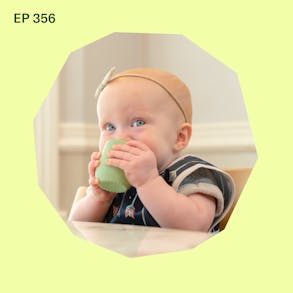
LISTEN TO THIS EPISODE
Episode Description
How can I help my baby learn to drink out of an open cup? In this episode we’re covering best practices for helping your baby learn to become an independent drinker. Your baby CAN go directly from the breast or bottle to an open cup, and these tips will help simplify your technique for making this milestone happen.
Links from this Episode
- ezpz Tiny Cup (2 oz) for babies 6-12 months
- ezpz Mini Cup (4 oz) plus straw system for babies 9m+
- Use affiliate discount code BABYLED for 15% off everything at ezpzfun.com
- Baby-Led Weaning with Katie Ferraro program with the 100 First Foods™ Daily Meal Plan, join here: https://babyledweaning.co/program
- Baby-Led Weaning for Beginners free online workshop with 100 First Foods™ list to all attendees, register here: https://babyledweaning.co/baby-led-weaning-for-beginners
Other episodes related to this topic:

Latest Episodes
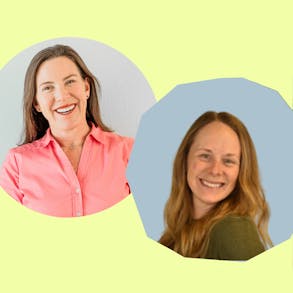
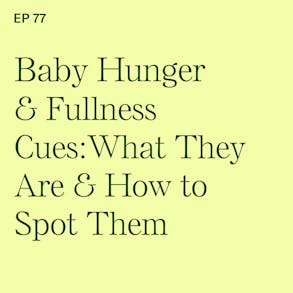
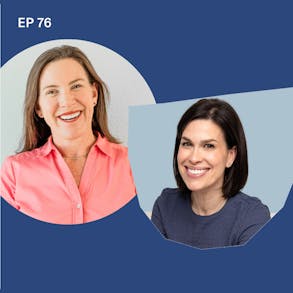
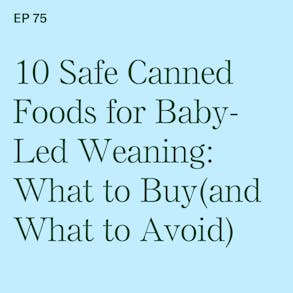
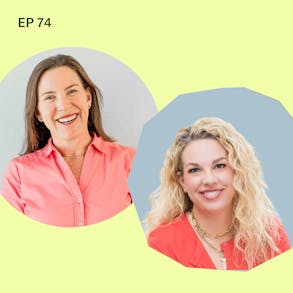
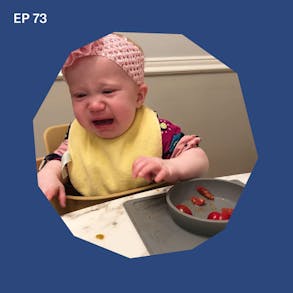
Katie Ferraro (0s):
So I am admittedly a little old school and I love email. Like writing emails to my email newsletter list is one of my most favorite work tasks. So every week I send out a roundup email with a recap of what's new in infant feeding, plus baby led weaning recipes that your whole family will love. So if you like reading email, I would love to have you on my email newsletter list. There are tons of Tips about starting solid food safely with gear recommendations and recipes plus personalized feeding guidance based on your baby's current age and stage. You can get signed up for my free feeding newsletter by going to https://fortifiedfam.com/newsletter. That's https://fortifiedfam.com/newsletter.
Katie Ferraro (41s):
I'll start sending you some useful infant feeding info this week. Checking in on your infant refresher CPR core status. Have you taken CPR recently? Actually everybody who helps feed your baby should know CPR because while there's no higher risk of choking with baby-led weaning compared to conventional spoon feeding CPR can save your baby's life. The course I take every quarter is available online. It's incredibly thorough, but it's also concise. You can get $10 off your online CPR course registration with my affiliate discount code KATIE10. The website you sign up at is https://bit.ly/onlinecprcourse And with the Open Cup Practice at the beginning, you know there's this fine line between gently guiding the cup to your baby's mouth and like forcing it in their mouth and you'll be like, oh my gosh, this doesn't feel right.
Katie Ferraro (1m 26s):
But the key is if we remember that learning how to eat is a full sensory experience, if we can get a cup close enough to the baby's nose without forcing it so that they can smell that there's something interesting in there that will pique your baby's interest and that will then encourage them to want to bring that open cup to the mouth on their own. And that's when they start learning the mechanics of how to drink out of an open cup on their own. Hey There, I'm Katie Ferraro Registered dietitian, college nutrition professor and mom of seven specializing in babyled weaning here on the Baby-Led Weaning Made Easy podcast. I help you strip out all of the noise and nonsense about feeding, leaving you with the confidence and knowledge you need to give your baby a safe start to solid foods using baby-led weaning.
Katie Ferraro (2m 17s):
Well, hello and welcome back. In this episode we're going to be talking about open cup practice with your baby. And I'll be sharing three simple tips for simplifying your technique. Sometimes when I broach this topic, parents will say, oh my gosh, Katie, I thought we're supposed to be focusing on food and now you're stressing me out about what the baby drinks and how they drink or hear from other parents. It's, oh, this is just one more thing I need to add to my list of things to do. And don don't want you to feel overwhelmed by this idea of open cup practice. So we're gonna break it down a little bit today and make this something that hopefully can be seamlessly integrated into your feeding routine at home. Now I like to start these mini baby-led weaning training episodes with a tip of the day.
Katie Ferraro (2m 59s):
And today's tip is be patient when it comes to open cup drinking. This one takes time. Okay. You might see babies on social media just crushing, you know their little cups picking 'em up and drinking like pros and you're like, oh my gosh, my baby's so far away from that. And that may be the case, okay? Remember with the weaning period, starting at six months of age when all of your baby's nutrition is coming from infant milk and that's coming outta your breasts are out of a bottle, okay? We're working towards six months, more months down the road at 12 months of age, almost all of your baby's nutrition can be coming from food and just a small amount will be coming from milk. And that milk, we want that to be out of the open cup. And we'll talk a little bit about timelines and milestones today as well.
Katie Ferraro (3m 41s):
But know that it's going to take time for your baby to be proficient at this. It's not gonna happen overnight and you're not doing anything wrong. If at seven months of age your baby still has no clue what to do with an open cup. Quick story. There's a mom in our program who just recently, she was mentioning on our office hours, she said, I thought you were crazy when you told me to start practicing open cup drinking with my baby when she's six months of age. She's nine months now and can drink totally on her own. Our open cup practice has been so valuable and my baby drinking out of an open cup is definitely our party trick. And I love that idea of like you're taking your baby to a party and you've been practicing in this thing for like a little bit of time and then all of a sudden the baby's rocking it and doing it on their own.
Katie Ferraro (4m 26s):
And it is like when little Babies drink out of an open cup, not only is it adorable, but it's a developmentally appropriate skill. And we're gonna talk about why today. So let's get going on three tips for simplifying your technique. And let's kind of go through the overview of like, alright, who's involved? What are we talking about? Why are we doing it? When do we start? Where do we practice? How come we're not talking about things like straw cups or sippy cups? And when do we need the baby off the bottle? What do we put in the cup? I got all that for you today. Let's start with who, right? We're talking about you and your baby. This is one of the ones where you need to help your baby with open cup drinking with the food stuff. Remember we talk about your job is to be in charge of what the baby eats and where they eat and when they eat. And that ultimately when you put that plate of food down in front of your baby, your baby takes over and it's their job to determine how much or even whether they want to eat.
Katie Ferraro (5m 14s):
Okay? That is Ellyn Satter's division of responsibility in feeding theory in action. We let the baby do their thing with the open cup, ideally, and ultimately we're working towards your baby becoming an independent drinker. But it doesn't start on day one, okay? You are going to have to help your baby with this for a period of time, weeks and months. Okay? Now that may sound overwhelming, but if we move to the next one, when do we do this? It only needs to take about five minutes after each meal. So generally starting at six months of age, you can start open cup practice. And ultimately our goal is that by 12 months of age, we wanna see the baby drinking out of that open cup on their own.
Katie Ferraro (5m 56s):
There's still going to be some spillage, okay? But you're gonna have to help a lot at at the beginning to get to the point where at the end they can do it by themselves and somewhere in the middle, that messy middle, and it's literally messy 'cause they're gonna slap the cup outta your hands. And when they're eight, nine months old, they're gonna wanna do it by themselves even though they can't do it yet. And some days they're not gonna be into it, okay? But the goal is five minutes after each meal, open cup practice if you can, I know that your baby knows how to drink and swallow liquids. They've been doing that for at least six months of life, right? Infant milk, that's breast milk or formula, is sufficient to meet your baby's needs for the first six months of life. And so sometimes parents get super stressed about the open cup and they kind of forget about practicing the food stuff. My suggestion to you is to prioritize food at mealtimes.
Katie Ferraro (6m 38s):
Babies should be able to spend around 15 to 20 minutes in their highchair exploring, playing with eventually eating the foods that you're offering. And then after that ends and I take the plate away, then I'll bring the open cup into the situation. There are some babies who are very easily distracted by the open cup. I know one of my twins, the boy, if he would see the open cup at any point during the meal, he would totally lose interest in the food and wanna play with the open cup. And then I was like, Ugh, I realized I just need to keep it outta sight outta mind for that kit. So I would suggest working it in towards the end of the meal. And then as your baby gets more proficient, offering the liquid from the cup alongside the meal so that your baby is also learning how to use that fluid inside of the cup to swish and remove the food that may be remaining on the roof or the size of the inside of their mouth.
Katie Ferraro (7m 24s):
Now why don't we do sippy cup? Okay? I have a whole separate episode called Six Reasons to Skip the Sippy Cup. That's an interview with with Dawn Winkelmann. She's a speech language pathologist who designs the feeding gear products for the company EZPZ. And in that episode, we break down all the reasons why sippy cup are not developmentally appropriate. And she covers that from the speech and language pathology side. And then from a nutrition standpoint, I cover all of the drawbacks of drinking outta sippy cup. But we, you know, I, I, as a first time mom myself, I thought, gosh, you just go from breast or bottle to a sippy cup and then eventually kids learn how to drink out of an open cup. And we know that developmentally, and from a nutrition standpoint, that is not ideal. We want to skip a sippy cup. And if you want to learn more about that, that's episode 40 (at) https://BLWpodcast.com/40.
Katie Ferraro (8m 9s):
if you just need a little bit like some talking points on whoa, here's why we're not doing sippy cup. And I'll also be interviewing Dawn in an upcoming episode about the 360 Cups because from again, a speech and language developmental standpoint, those 360 Cups are inappropriate and they may actually be doing harm to your baby's ability to learn how to drink out of an open cup. So ultimately the goal is to go rest or bottle to the open cup, okay? And while we don't wanna stress you out about, you know, getting your baby off the bottle, it's something to start thinking about around the 12 month mark. Okay? By 12 months of age, your baby should be transitioning off of the bottle. And parents are like, well then what do they drink out of? Well, they drink out of an open cup. Well, they don't know how to, well, that's why we start practicing at six months of age.
Katie Ferraro (8m 54s):
Okay, where do we practice this at the table? My suggestion to you as a dietician specializing in infant feeding is get in the habit of offering all foods and beverages to your baby at the table. Obviously you're breastfeeding or bottle feeding outside of the table during the Weaning period, six to 12 months of age. But to the best of your ability, try to make all of the food and all of the drinking out of the open cup stuff happen at the table. And that's gonna be very important for reducing choking risk as your child gets older and more mobile. Just a good habit to get into that foods and drinks in our family happen at the table. And you can start practicing at the table for five minutes with that open cup after every meal. And we get a lot of questions about straw cups as well.
Katie Ferraro (9m 35s):
Adon was also on the podcast in Episode 101 in an episode called Straw Cup Versus Open Cup Which Comes First. And I'll spoil or alert this one for you, but we drink out of an open cup first. And in that episode, Dawn goes through all of the reasons why it is developmentally appropriate for Babies to be doing open cups prior to straw cups and explaining the different Technique and how they learn how to drink So If. You're feeling distracted by straw cups. Put them aside and don't even think about the straw cup until your baby can drink out of the open cup. If you'd like to learn more, that's episode 101, Straw Cups Versus Open Cups Which Comes First. And you can find that at https://blwpodcast.com/101.
Katie Ferraro (10m 50s):
Hey, we're gonna take a quick break, but I'll be right back Now for the three tips for open cup practice. The tips are number one, consistency. Number two, contents. And number three, control. I kept 'em all C words for you to make this nice and concise. So tip number one, consistency. Try two practice for five minutes after every meal. I know there's a lot of things that you're already dealing with and if you don't get around to starting the open cup practice right at six months of age, that's perfectly fine. And we definitely do have some families who practice prior to that. Okay? Learning how to drink out of an open cup can be considered a pre feeding skill for Babies who for whatever reason, usually medical reasons, can't take infant milk out of a bottle or the breast.
Katie Ferraro (11m 30s):
They sometimes will even learn how to drink out of an open cup from birth, although that's certainly the exception and not the rule. But when your baby turns six months of age, if you can work this into your routine, five minutes of open cup practice after every meal practice makes progress and your baby will become an independent drinker much, much more quickly. Just like the more practice they get in the highchair with food, the more proficient they get at eating food. Same thing goes for the open Cup. So really aim for consistency if you can. Now, I know there's a lot going on at six months of age, some of you maybe haven't even started solid foods or you're stressed about the addition of solid foods or you know your baby's constipated 'cause you started solid foods, whatever the case may be. if you don't start right around the six month mark, that's perfectly fine.
Katie Ferraro (12m 14s):
I remember when Dawn released the tiny cup for EZPZ. My twins were I think eight months old. So we didn't, I never did open cup practice with my older kids, okay? They're, they're sloppy drinkers for a really, really long time. But with the twins we're really starting to see the benefits of open cup practice and that EZPZ tiny cup came onto the market, which was the first baby-led weaning cup. And it was around the time that twins were eight months, they actually got to test it in one of the prototypes even before it went to market. And I remember being like, you're supposed to start this at six months of age. Oh my gosh, my kids are eight months. I haven't, we're behind. You are not behind. Okay, you can make it up. We practiced after every meal to the best of our ability. They ended up being able to drink out of an open cup on their own by age one.
Katie Ferraro (12m 55s):
And ultimately your baby can do that as well. Practice makes progress. So try to be consistent. Second tip, let's focus on the contents of what is in the cup. Okay? A lot of times parents want to start with water. Obviously if your baby spills water, there's a lot less mess and anxiety and cost involved compared to if they're spilling breast milk or formula. But the reality is that water is a thin liquid that can be very challenging for earlier eaters. And we've covered that topic on the podcast a number of different times with a lot of different speech and language pathologists. But at the end of the day, your baby is more comfortable with thicker liquids like breast milk and or formula. Now a lot of parents are gonna be like, oh, I don't wanna waste my precious breast milk in a cup that they're just gonna slap over and spill and I get it.
Katie Ferraro (13m 40s):
And formula's not cheap. And again, we're not, we're not wasting it here, but there will be some spillage. And think about it, when your baby is learning how to drink out of an open cup and they tip their head back and they do it too far, 'cause this is new, okay? And the liquids come rushing into their mouth and some of it's pours down the side of their mouth, our tendency is to wanna, you know, rush in and clean it up and make everything okay. But please do not interfere when your baby is trying to learn how to drink out of an open cup and don't constantly be wiping them. There's that tendency to wanna always clean the baby, especially for those of us who might be a little on the type A side myself admitted, that's it stresses me out when I see like the milk dribbling down the side of their mouth. But you know what? The milk dribbling down this side of their mouth.
Katie Ferraro (14m 20s):
That is an important feeling or sensory experience for your baby to be having on their own. They need to feel, oh, that feels uncomfortable. When that milk dribbles down into my little fat neck rolls, that doesn't feel great because the next time they go to drink outta the open cup, they'll make a micro adjustment, tilt their head a little bit differently, tilt their cup a little bit differently, and slowly but surely that milk will no longer dribble down the side of their mouth, but only if they're allowed to do it for themselves. We can't do everything for our baby. And this is an example of when they get a little bit better at that open cup drinking, you wanna let them do it by themselves. But back to the contents of the cup, starting with the thicker liquids is preferable. It is certainly safer for the baby as well.
Katie Ferraro (15m 0s):
Many Babies will gag excessively on water, which is a thin liquid in my programs. We don't do water until your baby is older. And that's very different from what you might hear from other things on different social media sites, et cetera. How I prefer not to do water for Babies until they're closer to 10 months of age. I explain more in Episode 281, That's Called Water. Why offering water to early eaters can be dangerous. https://blwpodcast.com/281. if you want to learn more about the benefits of waiting until your baby is older, both from a nutrition and a safe swallow standpoint, that's Episode 281. So if you don't wanna do breast milk or formula or you can't for whatever reason, don't forget the power of offering purees out of the cup, okay?
Katie Ferraro (15m 42s):
So any of the foods that I'm offering to a baby finger foods included, you can easily puree them, add some extra breast milk or formula or unsweetened apple sauce water, no salt cooking broth if you're doing meat, okay? Whatever the case may be, get it to a consistency that your baby can learn to drink it out of an open cup. And you can practice drinking purees out of an open cup as well. But when it comes to the contents of what's in the cup, thicker is better for earlier years. Now, you don't want it so thick that like it gets frustrating to the baby and they tilt their head back and nothing happens, okay? You have to get to that consistency standpoint that's thick enough, okay? That it's not a thin liquid. Your baby's gonna excessively gag on, but not so thick that it doesn't actually pour out of the cup. And one of my favorite first foods to practice out of an open cup is pureed or thinned out meat.
Katie Ferraro (16m 27s):
So I generally will do meat on day four starting in the first week of baby-led weaning. If you're following my five step feeding framework every week we do a new fruit on Monday, a new vegetable on Tuesday, a new starchy food on Wednesday, a new protein food on Thursday, and an allergenic food on Friday. On Thursday, that fourth day of the week, we're doing meat in a variety of different ways. We're offering soft shreddable strips of meat with a lot of extra no salt broth. We might be doing a chunky puree that the baby's learning how to eat off of a preloaded spoon by themselves. And we also can do a thinned out meat product that we offer out of the open cup. Okay? your baby puts their head in there, they smell, they don't put their head in the cup, rather, they put their nose in the cup, okay? And you're helping them. We'll talk next about the Technique in a second, but the baby puts their nose kind of near the cup and they smell that meat if it's lamb or whatever the meat that you're making is.
Katie Ferraro (17m 13s):
And they know that something different is in there. Once they realize that there's something in that cup and it takes a little while for them to get the hang of that, but then they will be more interested in it. So I would encourage you to mix up what is in the cup. Alright? So tip one, we've got consistency practicing for five minutes after each meal. Tip two, we've got contents focused on the thicker liquids, which are easier for your baby to swallow. The third tip is about control. You are going to, over a six month period, be transitioning from a point where you have to literally hold your hands outside of the baby's hands as you help gently guide the cup to their mouth. That's at the six month mark to 12 months where they're picking that cup up on their own and drinking out of it on their own.
Katie Ferraro (17m 55s):
Okay? And this is a transition. You're gonna have to relinquish control. And there's that messy middle part that I mentioned around eight or nine months of age where your baby now knows there's something in the cup. They know the mechanism for picking it up and bringing it to their mouth. They haven't perfected it yet, and they're gonna be making a mess, but they want to do it on their own. And I would highly encourage you to be aware of when that control transition is happening from you needing to literally hold your hands outside of the cup and help bring the cup to the mouth to the baby wanting and being able to do it on their own and acknowledge that there is going to be a period in the middle where they're, it's gonna be messy, okay? And they're gonna spill and they're gonna make a mess. And you're gonna be like, what's the point of this? The point is that you are about to turn the corner where the baby can pick it up and do it on their own with minimal spillage.
Katie Ferraro (18m 41s):
And at that point, your baby is well on their way to becoming an independent drinker. And that's what we want is your baby drinking out of that open cup on their own, albeit with a little bit of spillage by the time they turn 12 months of age.
Katie Ferraro (19m 32s):
Hey, we're gonna take a quick break, but I'll be right back. At the very beginning. You might consider having the baby sit on your lap. I generally recommend if you're gonna eventually have your baby eat out of a highchair practice eating and drinking in a highchair. But sometimes with the open cup stuff, if your baby is seated safely in front of you, it's easier to wrap your hands, your adult hands around their little baby hands and then the cup is in the middle and you kind of together pick the cup up and bring it to the mouth. And there's a fine line between gently guiding the cup to the mouth and forcing it. You'll be like, this feels weird. I feel like I'm making my baby do it. But sometimes it's just about getting that cup close enough to their nose where they can smell that something is in there, right? Learning how to eat is a full sensory experience and helping get that cup close enough in their nose where they can sense, hmm, this smells different, will peak their interest in what's in the cup, and then they will be more inclined to help bring that to their mouth eventually on their own.
Katie Ferraro (20m 22s):
So just acknowledge there's gonna be a control shift here where you're the one guiding the cup at the beginning. Your baby's gonna be doing it by themselves by the time they're 12 months of age and you that might feel very, very far away. But a lot of really, really exciting things are happening between the six and 12 month mark and your baby being able to drink on their own. Your baby's own party trick is well underway if you guys can practice five minutes each day. Now, the Cup that I use for baby-led weaning, it's called the Tiny Cup. That's the cup from the brand EZPZ. That's the first baby-led weaning cup. It's about five years old at this point. It's a two ounce cup and this is a, a wonderful cup. It's won all sorts of awards. And I love this cup because prior to the advent of the Tiny Cup, there weren't, there was only like plastic cup or people would use like glass shot glasses, okay?
Katie Ferraro (21m 5s):
And, and those can be damaging to your baby's developing teeth, obviously dropping glass on the floor, it's a whole different story as far as plastic, we really tried to avoid plastics in the feeding environment. So I love the EZPZ Tiny Cup because it's a hundred percent food grade silicone, it's a two ounce cup. So I generally will fill it up about halfway with breast milk or formula, so about one ounce at a time. And then your baby will be working their way up to the point where in our program, our Babies who are around the 10, 11 month mark, they're doing one and a half ounces of breast milk or formula outta the open cup. Usually two of those cups after each meal, right? So one and a half ounces times two, they're getting three ounces of liquid out of the open cup after three meals a day, they're generally getting close to nine or 10 ounces of infant milk from the open cup.
Katie Ferraro (21m 50s):
And then there's just a little bit of room at the end of the day there for a bottle of your bottle feeding to finish off the amount of formula or breast milk that they would need to meet their fluid needs at around that nine, 10 month mark. so you might not be there right now, but practicing with that cup, you eventually can get there. So I like that Tiny Cup for six to 12 month old Babies. If and when you're ready to make the transition to the straw cup, I also use the EZPZ Mini Cup plus Straw system. The Mini Cup is a slightly larger cup. It's a four ounce EZPZ cup. Again, I don't focus on that at all until the baby has mastered open cup drinking. And then once the baby turns 12 months of age, I just take the lid off of that mini Cup and Straw system and I use that mini cup, the four ounce cup we oftentimes see on social media parents using the really big Mini Cup, which is four ounces and a baby who's six months of age.
Katie Ferraro (22m 39s):
And that cup is too big for the small size of the baby's mouth. So make sure you're using the right cup at the right time. I'll link up each of the different cups on the show notes page for this episode, which you can find at https://blwpodcast.com/356. I have an affiliate discount code for EZPZ. My code is KATIE10. If you wanna use that on their site, it's https://ezpzfun.com. There's a lot of information on there about the different cups and when to use them. We'll be back in a future episode, as I mentioned, talking about the 360 Cups. But for right now, just know open cup is where you wanna be. Practice consistency, focus on the contents, and be prepared to relinquish control when it comes to open cup practice.
Katie Ferraro (23m 20s):
And you guys will be well on your way to raising an independent drinker who can drink out of that open cup on their own, albeit with a little spillage by the time they turn six months of age. Thanks so much for listening, and I'll see you guys next time.
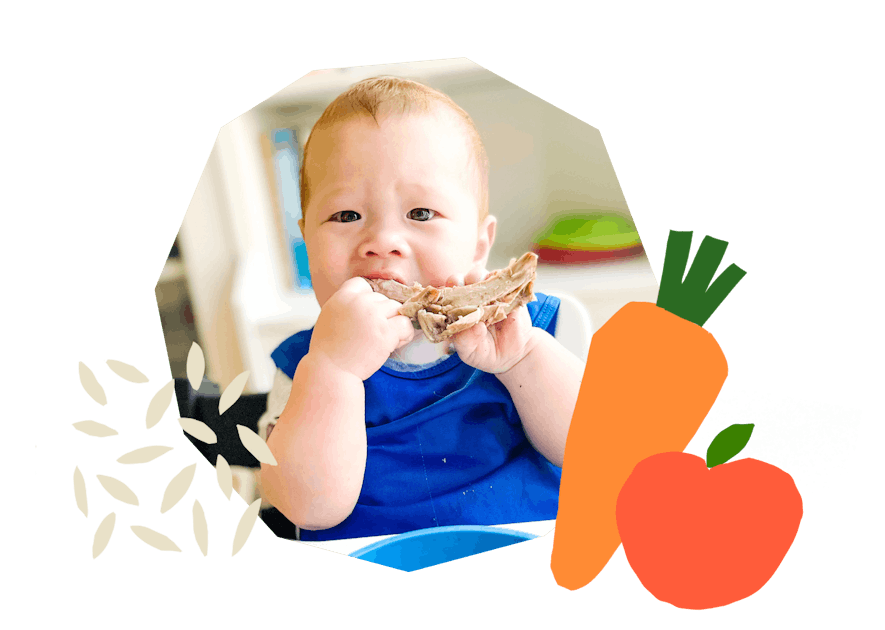
The Program Baby-Led Weaning with Katie Ferraro
A step-by-step digital program for starting solid foods safely and navigating the original 100 FIRST FOODS™ meal plan with baby-led weaning.
 EXPERT-LED, PROVEN APPROACH TO EATING REAL FOOD
EXPERT-LED, PROVEN APPROACH TO EATING REAL FOOD CONCISE VIDEO TRAININGS TO MASTER BABY-LED WEANING
CONCISE VIDEO TRAININGS TO MASTER BABY-LED WEANING 100 FIRST FOODS DAILY MEAL PLAN WITH FOOD PREP VIDEOS
100 FIRST FOODS DAILY MEAL PLAN WITH FOOD PREP VIDEOS
Baby-Led Weaning for Beginners Free Workshop
Is your baby ready to start solid foods, but you’re not sure where to start? Get ready to give your baby a solid foundation to a lifetime of loving real food…even if you’re feeling overwhelmed or confused about this next stage of infant feeding.
Get baby-led weaning recipes and tips delivered to your email inbox.

